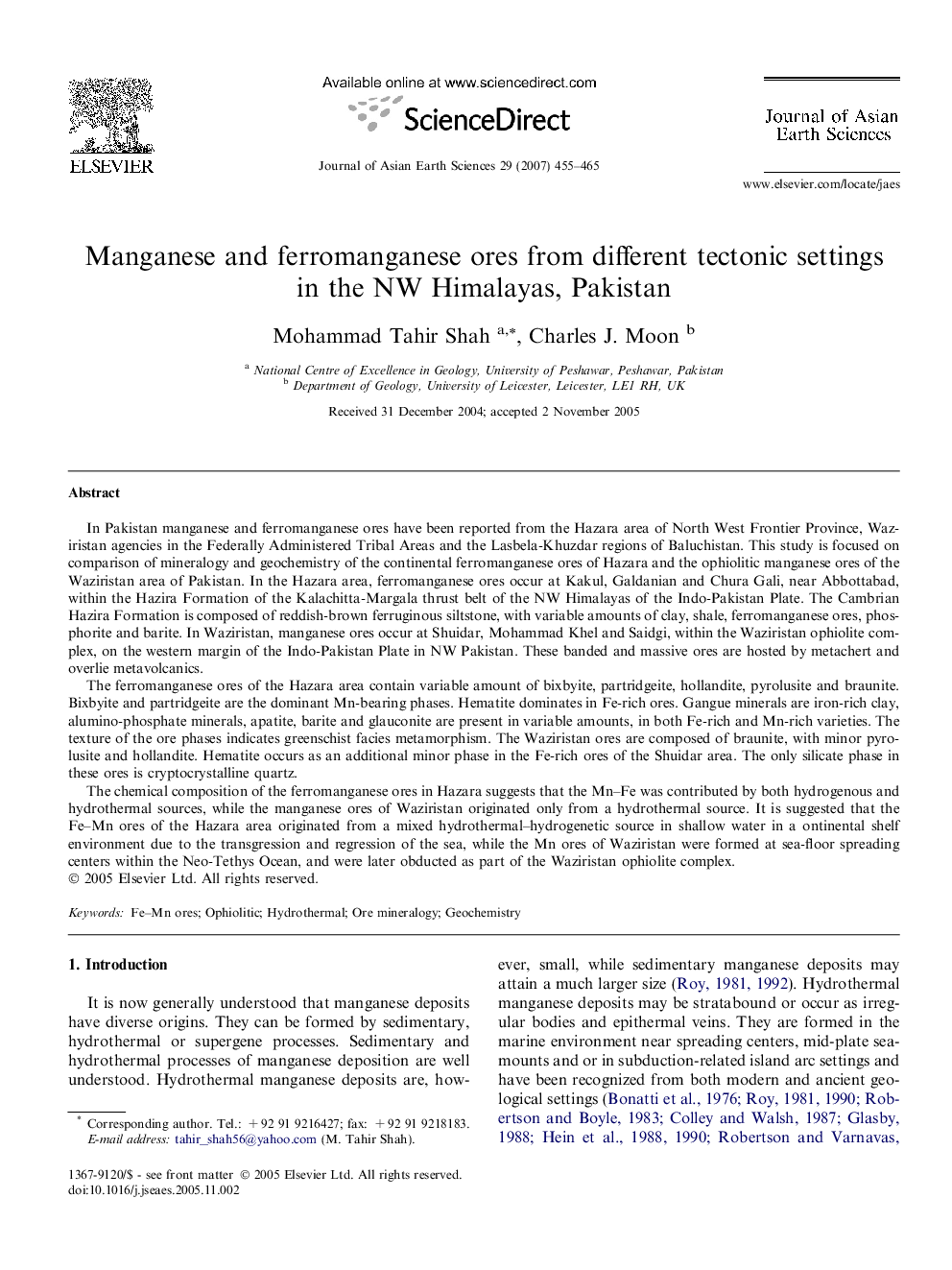| کد مقاله | کد نشریه | سال انتشار | مقاله انگلیسی | نسخه تمام متن |
|---|---|---|---|---|
| 4732823 | 1640440 | 2007 | 11 صفحه PDF | دانلود رایگان |

In Pakistan manganese and ferromanganese ores have been reported from the Hazara area of North West Frontier Province, Waziristan agencies in the Federally Administered Tribal Areas and the Lasbela-Khuzdar regions of Baluchistan. This study is focused on comparison of mineralogy and geochemistry of the continental ferromanganese ores of Hazara and the ophiolitic manganese ores of the Waziristan area of Pakistan. In the Hazara area, ferromanganese ores occur at Kakul, Galdanian and Chura Gali, near Abbottabad, within the Hazira Formation of the Kalachitta-Margala thrust belt of the NW Himalayas of the Indo-Pakistan Plate. The Cambrian Hazira Formation is composed of reddish-brown ferruginous siltstone, with variable amounts of clay, shale, ferromanganese ores, phosphorite and barite. In Waziristan, manganese ores occur at Shuidar, Mohammad Khel and Saidgi, within the Waziristan ophiolite complex, on the western margin of the Indo-Pakistan Plate in NW Pakistan. These banded and massive ores are hosted by metachert and overlie metavolcanics.The ferromanganese ores of the Hazara area contain variable amount of bixbyite, partridgeite, hollandite, pyrolusite and braunite. Bixbyite and partridgeite are the dominant Mn-bearing phases. Hematite dominates in Fe-rich ores. Gangue minerals are iron-rich clay, alumino-phosphate minerals, apatite, barite and glauconite are present in variable amounts, in both Fe-rich and Mn-rich varieties. The texture of the ore phases indicates greenschist facies metamorphism. The Waziristan ores are composed of braunite, with minor pyrolusite and hollandite. Hematite occurs as an additional minor phase in the Fe-rich ores of the Shuidar area. The only silicate phase in these ores is cryptocrystalline quartz.The chemical composition of the ferromanganese ores in Hazara suggests that the Mn–Fe was contributed by both hydrogenous and hydrothermal sources, while the manganese ores of Waziristan originated only from a hydrothermal source. It is suggested that the Fe–Mn ores of the Hazara area originated from a mixed hydrothermal–hydrogenetic source in shallow water in a ontinental shelf environment due to the transgression and regression of the sea, while the Mn ores of Waziristan were formed at sea-floor spreading centers within the Neo-Tethys Ocean, and were later obducted as part of the Waziristan ophiolite complex.
Journal: Journal of Asian Earth Sciences - Volume 29, Issues 2–3, 1 February 2007, Pages 455–465